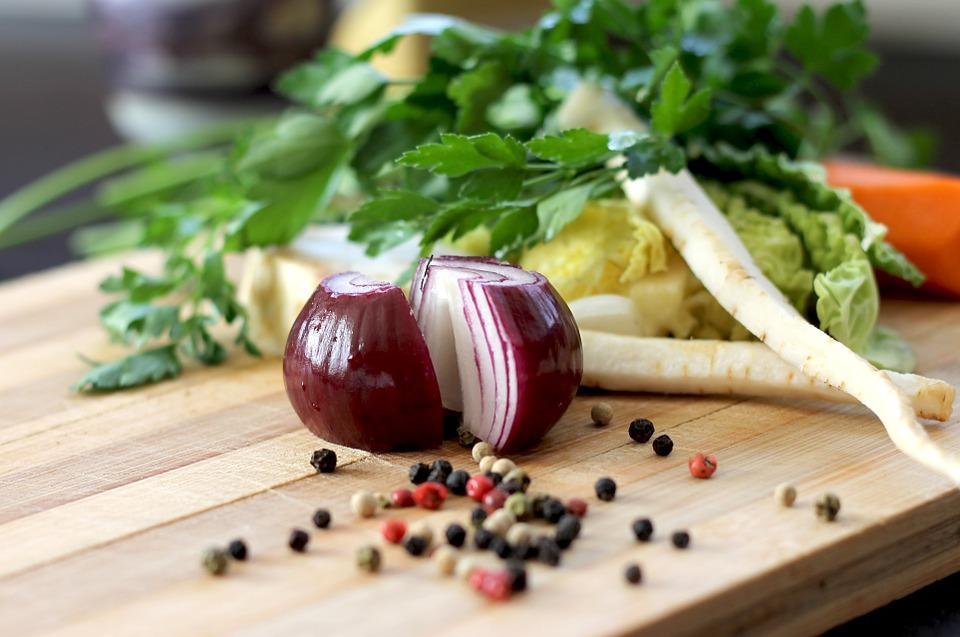7 Secrets To Making The Ultimate Chicken Soup

Flickr / Meal Makeover Moms
Never underestimate the power of a well-made chicken soup. You might associate a bowl of the good stuff with being sick, but when it’s done right, a homemade chicken soup can rival the “fancier,” more complicated soups. It’s all about the ingredients and timing. Here are our seven secrets to making the best chicken soup.
1. Make Your Own Stock
If you’re looking to make a chicken soup that’ll hit it out of the park, you should make your own chicken stock. If you had chicken for dinner the previous night, always save the carcass for soup. You’ll need a few hours to spare, so if you’re having a lazy Sunday, give this recipe a try and make your own stock. The flavor will be worth it. You can also try submerging and cooking the whole bird in a pot of water to get even more flavor into your chicken stock.
2. Don’t Use Crappy Ingredients
When you’re making something slow-cooked like chicken soup, keep in mind that you’re maximizing the flavor of simple ingredients. This means the better quality ingredients will give your soup a better overall flavor. If you buy the cheapest chicken possible, you might be sacrificing the flavor and the same goes for the vegetables. If you can splurge on an organic chicken, you should.
3. Use A Mirepoix

Pixabay
It’s not as fancy as it sounds. A mirepoix is simply carrots, celery and onion, but this trio is a foolproof vegetable combination that’ll give you the base flavor you want for your soup. You don’t need to get fancy with the vegetables if you don’t want to. You can always add in additional vegetables as your soup is cooking, but starting out with these three is always your best bet.
4. Sweat Your Vegetables
Since chicken soup has only a few ingredients, you’ll want to maximize the flavor of those ingredients by sweating the aromatics. If you decided to opt out of making your own stock, your first step in making the soup is to sear your chicken, a few pieces at a time, in a deep-bottomed pot. Using the natural drippings that are left in the pan after your cook each piece until it’s golden brown, you should add onions until they become translucent and tender and then add your celery, garlic and carrots. Your goal is to build up the flavors of your soup as you go.
Once you sweat your vegetables, you can cover them with chicken broth (either store-bought or homemade), bring it to a boil, add the chicken back in along with any herbs, reduce the heat to a simmer and let it go for a half hour or until the chicken is tender.
5. Make Sure All Of Your Ingredients Are Bite-Sized
One of the most crucial parts of making soup is making sure all of the ingredients are small enough to fit on your spoon. You don’t want to make the chicken or vegetables so big that you get a whole spoonful of carrot or a spoonful of celery. You want all of the soup components to fit equally on the spoon so you can take that perfect bite.
6. Make Sure You Season Properly

Unsplash
You can’t be afraid to be generous when it comes to seasoning. While you’re sweating your vegetables, in the beginning, you should add a little salt and black pepper to the mirepoix. Before you sear the chicken in the pot, season it with more salt and pepper.
Throughout the cooking process, it’s a good idea to keep tasting as you go. Don’t assume a pinch of salt and a few shakes from the pepper grinder is enough. You’ll know when something has enough salt and be able to pick up on all of the flavors of your soup since salt helps to enhance other flavors.
7. Factor In The Cooking Time For Each Ingredient
If you decide to go rogue with your vegetables — aside from celery, onions and carrots — make sure you consider the cooking times for each ingredient. You’ll want to put the smaller vegetables in towards the end so that they don’t get overcooked and add the tough vegetables, like root vegetables, earlier in the process.
For chicken noodle soup, adding in the noodles should be the very last thing you do. Keep in mind that the noodles will continue to cook in your bowl as they sit in the hot broth.
Pro tip: Every time you reheat the soup, the noodles will become softer. Consider making your noodles in a separate pot, cooking them to your desired texture, and add them in handfuls each time you heat up your soup. You could also cook your noodles halfway and then remove your pot from the heat.











